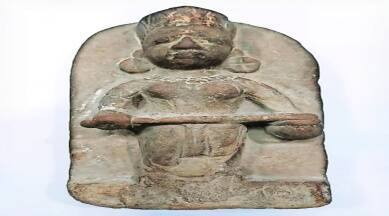Goddess Annapurna Idol | 08 Nov 2021
Why in News
Recently, an ancient idol of Goddess Annapurna was brought back to India after over a century from Canada.
- The Idol was received by the Archaeological Survey of India (ASI). It will be placed in its original location - the Kashi Vishwanath temple.
- This idol was smuggled out of the country somewhere around 1913.
Key Points
- About:
- Goddess Annapurna: She is the goddess of food. She is also known as the manifestation of the goddess Parvati, partner to Lord Shiva.
- The idol holds a bowl of kheer in one hand and a spoon in the other.
- Benares Style: The 18th-century idol, carved in the Benares style, was part of the collection at the MacKenzie Art Gallery at the University of Regina, Canada.
- Varanasi, also known as Benares, Banaras, or Benaras or Kashi or Kasi, is a famous Hindu holy city situated on the banks of the river Ganges in the Indian state of Uttar Pradesh. It is the rich cultural tradition of Varanasi that makes it the cultural capital of India.
- Goddess Annapurna: She is the goddess of food. She is also known as the manifestation of the goddess Parvati, partner to Lord Shiva.
- Kashi Vishwanath Temple: It is one of the most famous Hindu temples dedicated to Lord Shiva.
- It is located in Varanasi, Uttar Pradesh.
- The temple stands on the western bank of the river Ganga, and is one of the twelve Jyotirlingas, the holiest of Shiva temples.
- It was constructed in the year 1780 by the Maratha monarch, Maharani Ahilyabai Holkar of Indore.
Archaeological Survey of India (ASI)
- ASI, under the Ministry of Culture, is the premier organization for the archaeological research and protection of the cultural heritage of the nation.
- It administers more than 3650 ancient monuments, archaeological sites and remains of national importance.
- Its activities include carrying out surveys of antiquarian remains, exploration and excavation of archaeological sites, conservation and maintenance of protected monuments etc.
- It was founded in 1861 by Alexander Cunningham- the first Director-General of ASI. Alexander Cunningham is also known as the “Father of Indian Archaeology”.
- ASI functions under the provisions of the Ancient Monuments and Archaeological Sites and Remains Act, 1958 (or AMASR Act).

